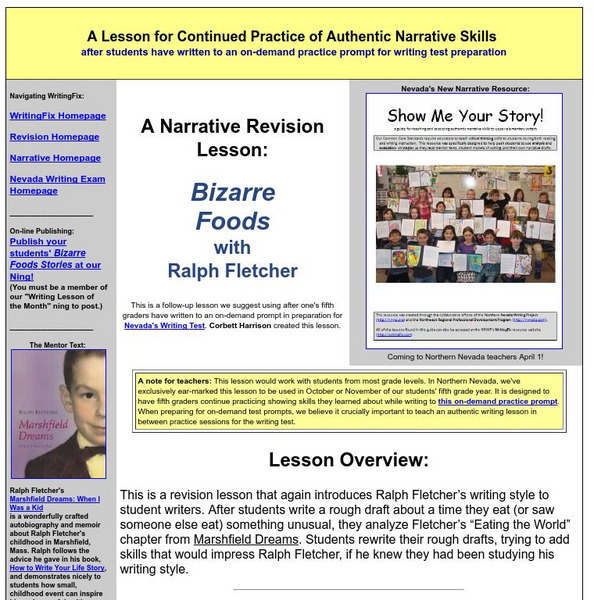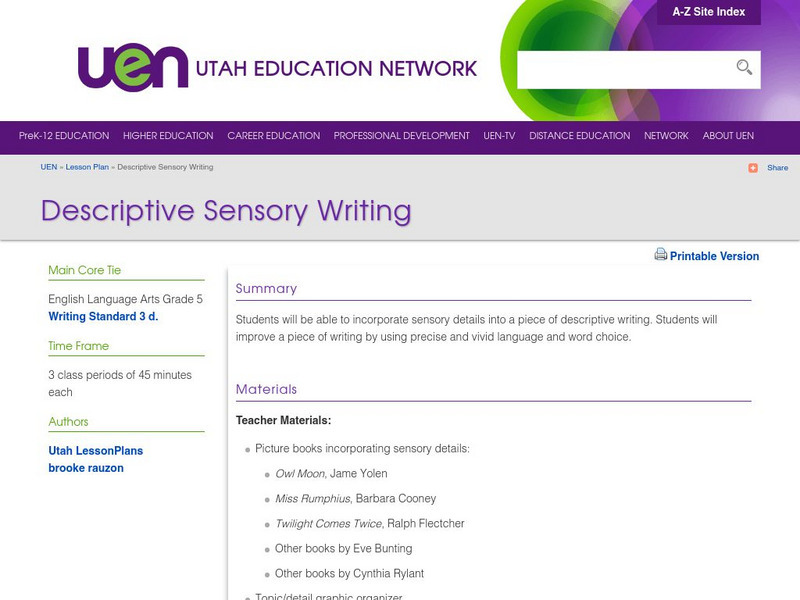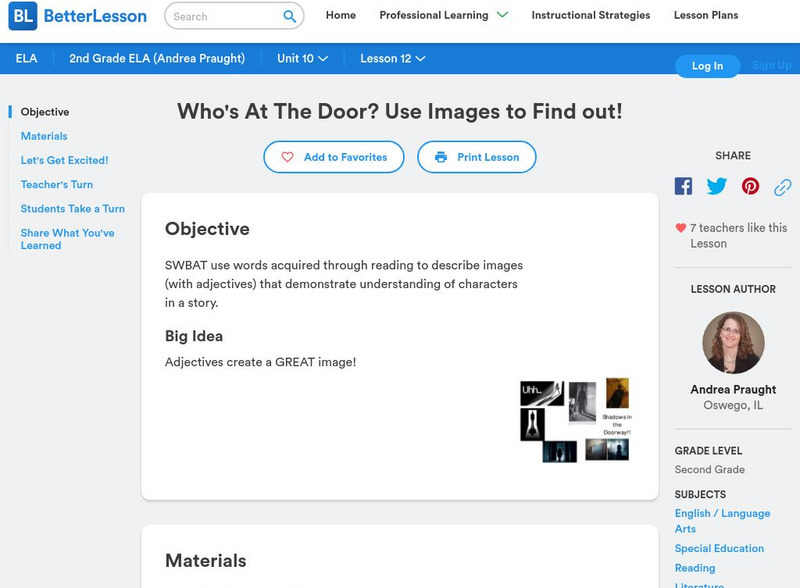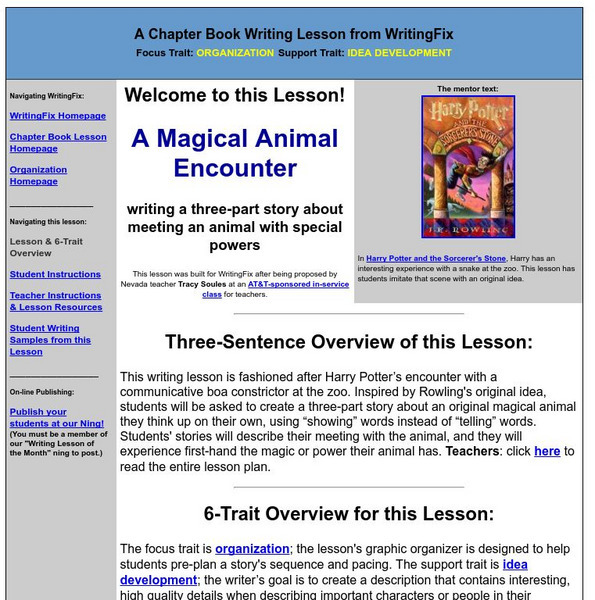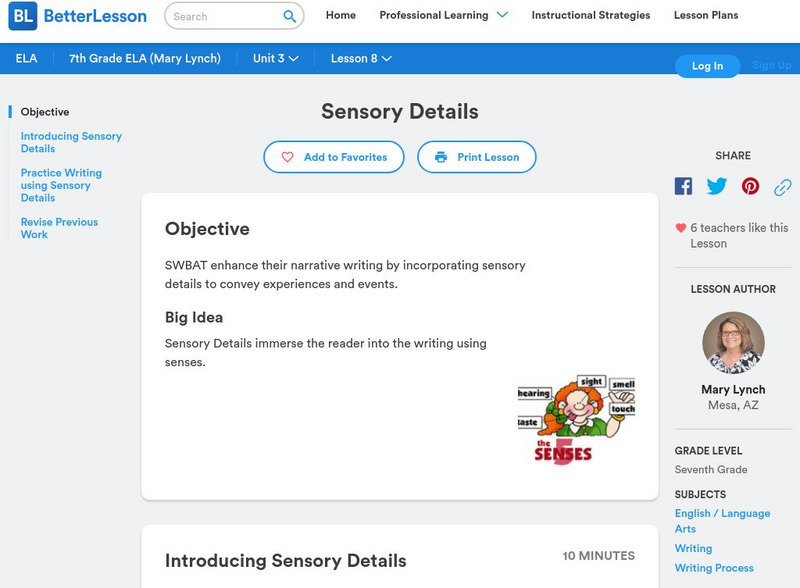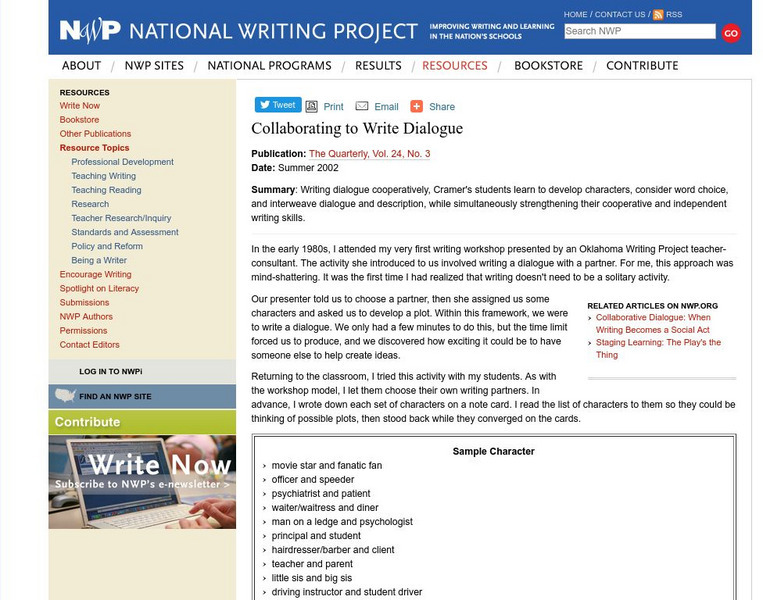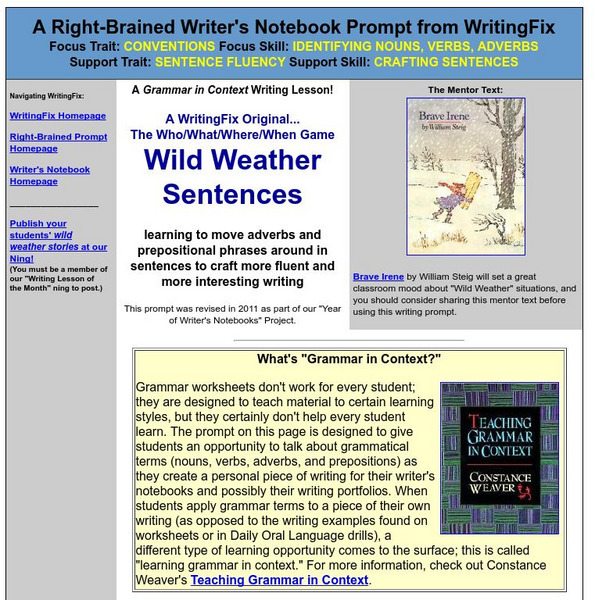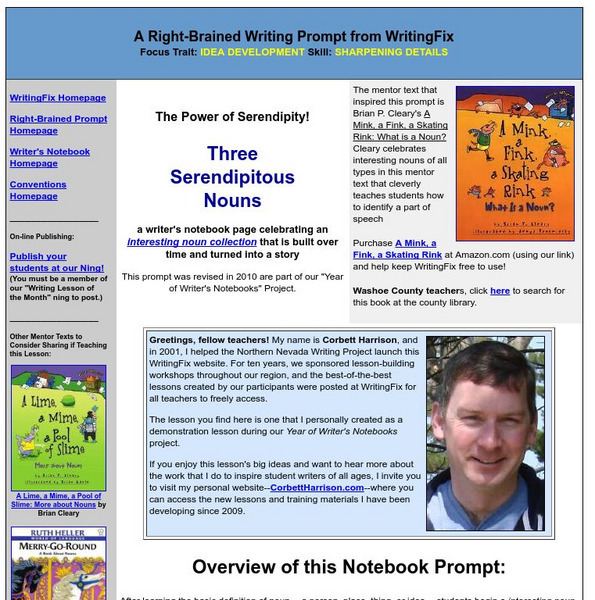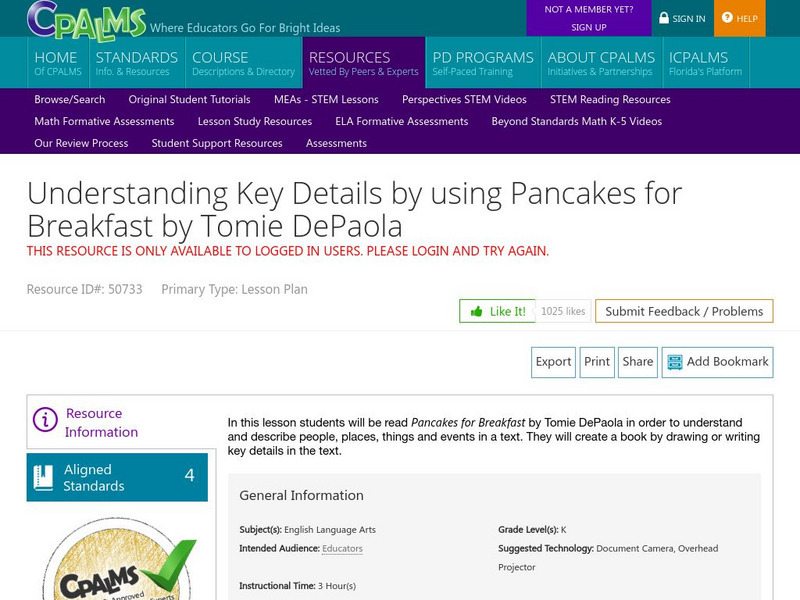Writing Fix
Writing Fix: Bizarre Foods With Ralph Fletcher: A Narrative Revision Lesson
In this lesson, Ralph Fletcher's writing style is introduced to student writers. Young scholars will write a rough draft about a time they ate, or a time when they saw someone else eat, something unusual. Then students will read and...
Utah Education Network
Uen: Descriptive Sensory Writing
In this lesson, 5th graders will engage in descriptive writing. Students will improve a piece of writing by using precise word choices that are full of sensory word choices.
ReadWriteThink
Read Write Think: Using Curiosity for Descriptive Writing
Lesson plan which allows kindergartners to combine their experiences and curiosity into developing beginning descriptions. Students use memories and illustrations in writing.
Better Lesson
Better Lesson: Describing a Memory
Students will be able to use a combination of drawing, dictating, or writing to narrate a single event and provide a reaction to what happened. This lesson centers around the book "The Song and Dance Man", a great Grandparents Day activity!
Better Lesson
Better Lesson: Who's at the Door? Use Images to Find Out!
Students will use words acquired through reading to describe images (with adjectives) that demonstrate an understanding of characters in a story. The teacher will read Miss Nelson is Back which has great descriptors and will hold a class...
Writing Fix
Writing Fix: A Magical Animal Encounter
This writing lesson plan is fashioned after Harry Potter's encounter with a communicative boa constrictor at the zoo. Inspired by Rowling's original idea, students will be asked to create a three-part story about an original magical...
PBS
Pbs Teachers: Story Writing With Arthur
This series of 12 downloadable activities teach students some basics of story writing, using books or videos from the PBS "Arthur" series as a springboard. Activities include creating story maps, asking questions about characters and...
Other
Study.com: How to Use Descriptive Details & Sensory Language in Your Writing
When you write a narrative, you can draw your reader into your experiences by adding specific, concrete details and sensory language to your storytelling. This lesson tells you exactly how to do it. W.9-10.3d Precise/sensory details,...
Better Lesson
Better Lesson: Sensory Details
Students will learn how to enhance their narrative writing by incorporating sensory details to convey experiences and events. A power point presentation on sensory details is included.
South Carolina Educational Television
Know It All: Writing Letters
The students will learn how to form a proper letter. They will be able to remove key ideas/details from a text and apply it to their writing. They will also be able to incorporate transition and descriptive words into their writing.
Other
National Writing Project: Collaborating to Write Dialogue
In this lesson, writing partners work together to develop a plot and characters. The lesson emphasizes the use of dialogue to develop the characters and plot of the story.
Writing Fix
Writing Fix: To Imitate Two Nature Writers
In this lesson plan each writer will compose and revise a "showing" description inpsired by an object or a place in nature. Long before drafting, students will discuss and compare the writing styles and techniques of published authors...
Alabama Learning Exchange
Alex: Writing to Determine, "What Is a Pulgar?"
This lesson plan is a writing follow-up to the guided reading lesson plan, "What is a Pulgar?" It utilizes a Makes Sense Strategies Think-sheet to guide the writing.
Writing Fix
Writing Fix: The Who/what/where/when Game: Wild Weather Sentences
In this instructional activity, Teaching Grammar in Context by Constance Weaver provides foundational information for this instructional activity. Brave Irene, written by William Steig, is used as the mentor text of this instructional...
Writing Fix
Writing Fix: Serendipitous Superheroes
In this lesson, SuperHero ABC, a book written by Bob McLeod, and Meanwhile, a book by Jules Feiffer, are used as mentor texts. Students will work in groups and create lists of unique superhero powers that start with different letters of...
ReadWriteThink
Read Write Think: Draw a Story: Stepping From Pictures to Writing
Help young students move from drawing pictures into writing simple stories. Good plan for having students put pictures in sequential order and teaching them about sequential order.
ReadWriteThink
Read Write Think: More Than One Way to Create Vivid Verbs
Contains plans for three lessons to help students use vivid verbs in their writing. In addition to objectives and standards, this instructional plan contains links to sites used in the lessons as well as assessment and reflection...
Writing Fix
Writing Fix: Three Serendipitous Nouns
In this lesson plan, the book entitled A Mink, a Fink, a Skating Rink: What Is a Noun? (Words Are Categorical), written by Brian P. Cleary, is used as the mentor text. After learning the basic definition of noun, a person, place, thing,...
Utah Education Network
Uen: 2nd Grade Act. 11: Character Sketch
This lesson engages students in describing the main character from Patricia Palacco's book, My Rotten Redheaded Older Brother. Students will analyze a picture of the main character and the teacher will write all of the students'...
CPALMS
Cpalms: Understanding Key Details by Using Pancakes for Breakfast
[Free Registration/Login Required] In this lesson plan, learners will be read Pancakes for Breakfast by Tomie DePaola in order to understand and describe people, places, things and events in a text. They will create a book by drawing or...
ReadWriteThink
Read Write Think: Seasonal Haiku
This site is a three-part lesson that teaches students how to write and depict seasonal imagery through haiku. Students study, listen to, and create original haiku on colored backgrounds.
ReadWriteThink
Read Write Think: Guess What's in the Bag a Language Based Activity
Contains plans for a language activity called "Guess What's in the Bag." Students try to guess the object in a bag in order to develop descriptive language, listening, and problem solving skills. In addition to objectives and standards,...
Other
Tesol: Sensory Details Worksheet: Adding Details Add Interest
Use this worksheet to practice enhancing your writing by using sensory language. Sensory details include words that describe sights, sounds, and smells of the setting, characters, and interactions.
Alabama Learning Exchange
Alex: What's Going on and Where Am I?
For this lesson, middle schoolers write a descriptive essay about an historical event as seen through the eyes of an alien from a different planet and time. The lesson encourages the use of colorful and exciting adjectives, adverbs, and...
